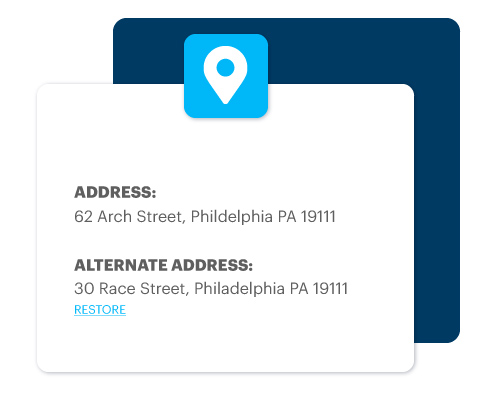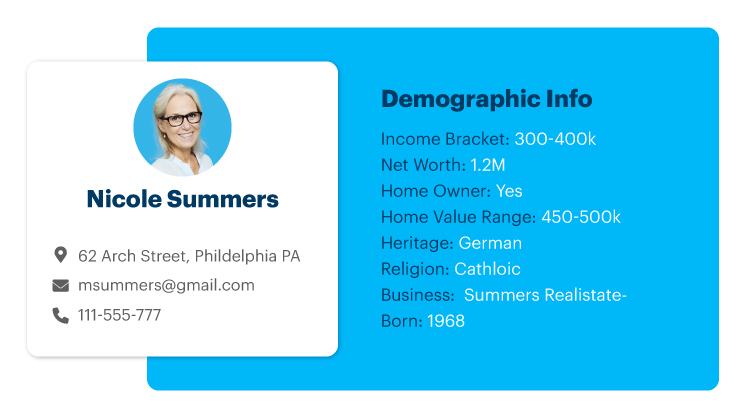Nonprofit Technology & Fundraising Blog
Subscribe to our mailing list

January 17, 2023 |
At first blush, donor communications (mailings, emails, etc.) may seem like a rather simple process, but there is quite a bit of thought involved for them to be effective. One of the most essential components of any mailing is the greeting, and this can be fraught with complications.
Accordingly, a crucial function of an effective CRM is having the ability to track multiple donor addresses and associate alternative addresses with specific salutations to make mailings and communication an easy task.

Think of the different types of mailings, events, and communications you send out throughout the year. Some times the communications may be casual, such as an afternoon picnic, while other times it may be formal like a gala – or the communication may relay information of serious gravity. Whatever the case may be, the feel of each of these outreaches will shift and the way you address your donor should change accordingly. For a formal gala it’s likely that you will want to use a greeting with titles and last names, while a casual event may warrant a first name greeting or perhaps even a nickname.
It is not uncommon to need more than one salutation for a single donor record. Creating separate address records for the sole purpose of creating unique salutations is an effective solution. In these instances, the alternative mailing address for the donor is the same physical mailing address, but the salutation is different.
If you have multiple constituents using a shared record but they are involved in different capacities at your organization, it’s going to be important to have an easy way to address each individually. To manage this scenario, you can create additional address records for each individual. Though the physical mailing address will again be the same for all, the first name, last name, and salutation fields will change. If you know how each individual is involved with your organization, mark the address record with a specific mailing type, so that when you send out certain mailings (like a volunteer opportunity), you can address the mailing to the right person in the household.
Example: A constituent record for Mary and Ken Hawley includes both Mary and Ken in the salutation field. However, only Mary is a board member, and only Ken is a volunteer. When you send board member communications you want to address Mary, and when you send volunteer targeted materials you want to address Ken. An easy solution is to create two alternative mailing addresses. Each mailing address will have the same physical address but the salutation associated with each mailing will be unique.
With DonorPerfect, data entry is a breeze. Simply click Copy Address from Main to carry over the same mailing address; then, type in the unique salutation to associate with the record. It is also helpful to assign a mailing type for easy filtering when you are creating your mailing lists.
Pro Tip: Create alternative addresses or aliases that you can use to search for a record. This is useful if you want to pull up a record by different last names in a household or use an abbreviation for an organization.

You may think you only have a handful of donors with secondary residences. What’s the harm in a few donors missing out on your annual gala invitation because they’re away for the season? Real estate holdings are a highly relevant indicator of wealth and an essential consideration when identifying potential major donors. So if you’re sending targeted communications looking for event sponsors, capital campaign appeals, or any other major gift appeals, these are exactly the donors you want to be mailing to. Tracking these secondary addresses and, if you have them, seasonal dates, ensures your donors receive your communications at the right time in the right place.
DonorPerfect makes it easy not only to track multiple mailing locations, but will also track seasonal dates so you know what addresses to use for your constituents throughout the year.
Make sure none of your intended recipients miss out on your carefully crafted invites, letters, and appeals. Your organization and cause mean a great deal to them and tailoring your communications to them with appropriate greetings and addresses shows them they mean a great deal to you too.
Your nonprofit data is meant to help your organization make more informed decisions that will ultimately lead to more revenue for your mission, not make your job harder than it needs to be. The Clean Data Checklist, available for free download below, is a customizable guide for your nonprofit data procedures, complete with best practices and examples. Here’s to healthier data that leads to better results!
Notifications
Follow us on social!